Best
ALTO SAXOPHONE FOR BEGINNERS
-
Overall: Adjustable thumb rest and fully ribbed body
-
Best Feature: A Small, Lightweight Body Is Comfortable To Hold
-
TedScore™: 7/10
Best
SOPRANO
SAXOPHONE FOR BEGINNERS
-
Overall: A robust and reliable tenor saxophone
-
Best Feature: Yellow brass produces a versatile tone
-
TedScore™: 9/10
Best
TENOR SAXOPHONE FOR BEGINNERS
-
Overall: Clear lacquer finish for brilliant projection
-
Best Feature: Has A Durable Construction,
-
TedScore™: 8/10
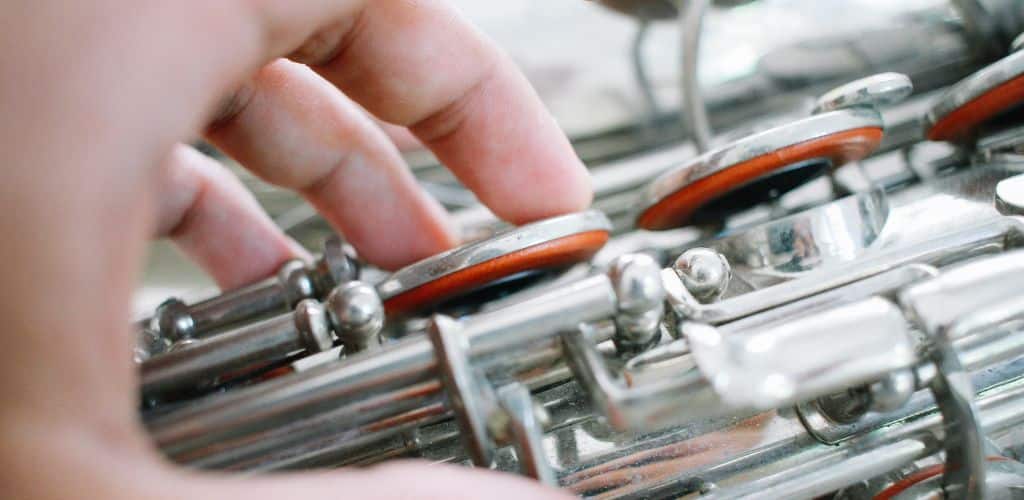
The instant my hands touched the sax, it became clear that the magic of music didn’t just lie in the melody. It was also in the intricate saxophone mechanism that brought it to life. This amazing instrument, mostly crafted from brass, stands as a true testament to art and engineering.
When I play, I feel connected to every part of my saxophone, from the delicate mouthpiece to the bell that flares with every note.
In this article, we’ll take a tour through the anatomy of a saxophone. You’ll get to know the function of each part and how they contribute to the distinct, soulful sound that can only come from a sax.
Whether you’re a professional player or a curious newcomer, you’re in for a treat.
Who knows?
You might just catch the saxophone bug by the end of this jaunt.
Main Components of a Saxophone
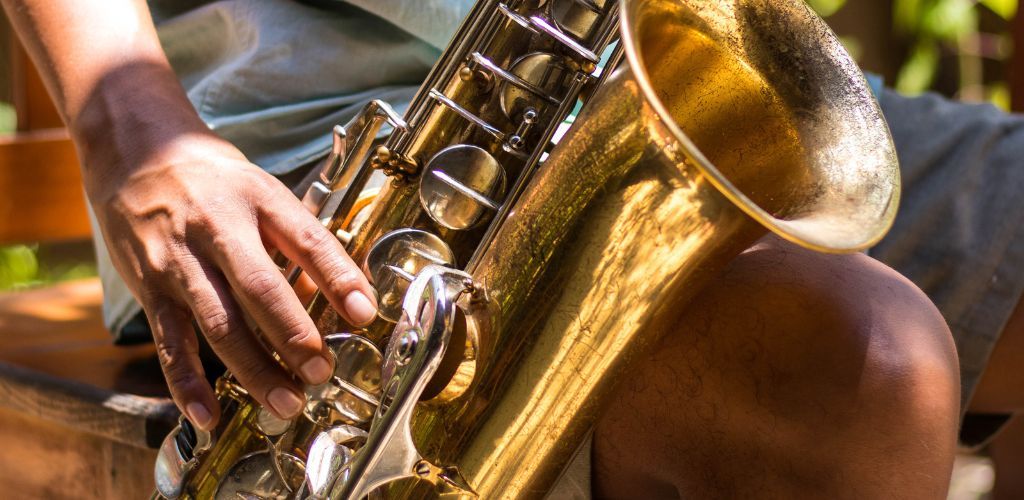
When I think about saxophones, the shiny brass and curvy silhouette immediately come to mind, along with the intricate key mechanism that makes playing this instrument a joy.
Let’s look at what makes a saxophone tick—or should I say toot!
Body Structure

The body of a saxophone is like the spine of a fabulous book; it holds everything together.
It’s a long, conical brass tube that curves into a U-shaped bow ending in a flared bell.
This brass tube is responsible for the saxophone’s iconic shape and size, and believe it or not, it dramatically influences the sound that warms our hearts.
Neck

The saxophone neck is the curved section connecting the mouthpiece to the body, like my neck connects my head to my torso.
It’s typically made of brass and lined with cork where the mouthpiece attaches. The neck is responsible for guiding air into the body and can influence the overall intonation and response of the saxophone.
Mouthpiece

The sound generators of the entire ensemble are the mouthpiece, the reed, and the ligature. It’s often made of ebonite, metal, or sometimes other materials, each contributing to the instrument’s unique voice.
Its shape and material greatly influence the tonal quality, determining whether the sound is bright or dark.
Reed

The reed attached to the mouthpiece is a thin cane strip, although synthetic options are available.
The reed vibrates against the mouthpiece when I blow, creating the initial sound waves. My choice of reed strength determines the ease and flexibility of my playing.
Ligature

A ligature is a small device that fastens the reed to the mouthpiece, often metal or sometimes plastic or fabric.
It’s crucial to hold the reed securely in place to ensure consistent vibration. I always check that it’s appropriately fastened for the best sound.
Types and Accessories

In this section, I’ll guide you through the different types of saxophones and the essential accessories that accompany them.
Saxophone Types
Saxophones primarily come in four types: alto, tenor, soprano, and baritone. Each type has a distinct pitch range and size, contributing to its unique role in music ensembles.
Alto Saxophone
This medium-sized saxophone is quite popular among students due to its manageable size and pitch. It has a relatively bright sound.
Alto Saxophone by Gear4music

PERFECT FOR: Beginners
FEATURES: Adjustable thumb rest and fully ribbed body
OTHER INFO: A Small, Lightweight Body Is Comfortable To Hold
Alto Saxophone by Gear4music
- Compact and lightweight body
- May not meet the standards of advanced musicians in terms of sound quality and intonation
When you click ‘Check Price’, you’ll see there are loads of great places to buy this item. Our personal favorite is Sweetwater for the US, and Thomann and Gear4Music for the UK & Europe.
They are the largest music retailers, with excellent customer service, competitive prices, really fast shipping, and the longest guarantees.
The professional musician who wrote this article combined many things,
from the product build, manufacturer’s reputation through to feedback
from other users, to create our famous TedScore™.
Tenor Saxophone
Larger than the alto, the tenor saxophone has a deeper, more robust tone. This type is often featured in jazz music.
Trevor James 'The Horn' Tenor Saxophone

PERFECT FOR: Beginners
FEATURES: A robust and reliable tenor saxophone
OTHER INFO: Yellow brass produces a versatile tone
Trevor James 'The Horn' Tenor Saxophone
- Rib-mounted keys provide enhanced key work strength and improved resonance
- The saxophone's finish might not match the quality found on pricier tenor saxophones
When you click ‘Check Price’, you’ll see there are loads of great places to buy this item. Our personal favorite is Sweetwater for the US, and Thomann and Gear4Music for the UK & Europe.
They are the largest music retailers, with excellent customer service, competitive prices, really fast shipping, and the longest guarantees.
The professional musician who wrote this article combined many things,
from the product build, manufacturer’s reputation through to feedback
from other users, to create our famous TedScore™.
Soprano Saxophone
The soprano is smaller than the alto and commonly straight rather than curved. It produces a higher pitch and is more challenging to play due to its size.
Elkhart 100SS Student Soprano Saxophone
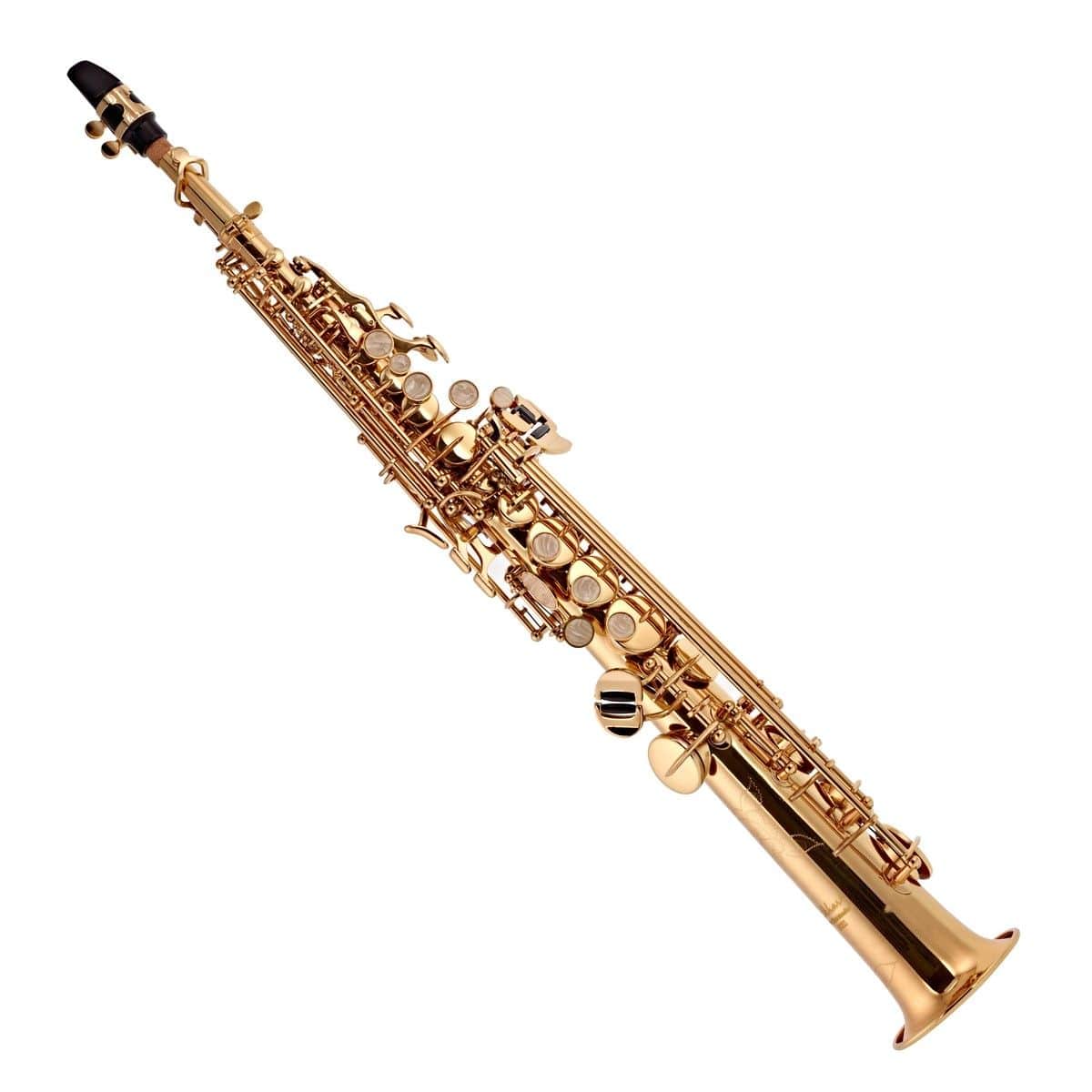
FEATURES: Clear lacquer finish for brilliant projection
OTHER INFO: With a detachable curved neck, which makes it easier to transport and store
- One piece body for improved resonance and intonation
- Comes with two crooks so you can find a shape to suit you
- Uses a soft shell case
When you click ‘Check Price’, you’ll see there are loads of great places to buy this item. Our personal favorite is Sweetwater for the US, and Thomann and Gear4Music for the UK & Europe.
They are the largest music retailers, with excellent customer service, competitive prices, really fast shipping, and the longest guarantees.
The professional musician who wrote this article combined many things,
from the product build, manufacturer’s reputation through to feedback
from other users, to create our famous TedScore™.
Baritone Saxophone
The largest in the standard range, the baritone sax has a deep, lower notes. Due to its size and lower pitch, it’s typically used to provide bass in sax ensembles.
Rosedale Baritone Saxophone
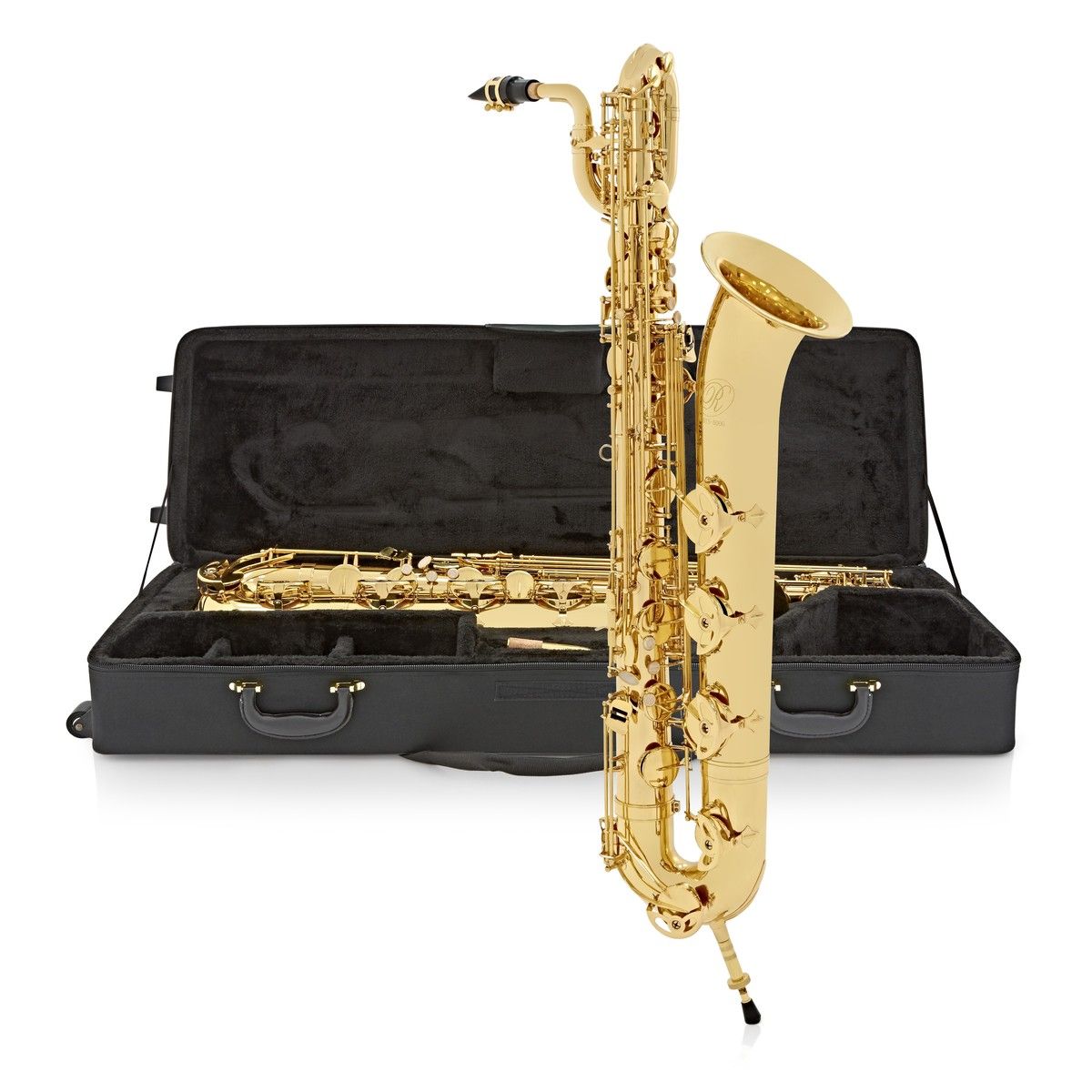
FEATURES: Visually striking and attractive with its gold lacquer finish
OTHER INFO: It has a low A key - making it versatile and capable of playing a wider range of music
- Has a warm, rich sound
- Durable and well-made, with high-quality materials that ensure it will last for years
- Relatively heavy, quite difficult to hold for a long time
When you click ‘Check Price’, you’ll see there are loads of great places to buy this item. Our personal favorite is Sweetwater for the US, and Thomann and Gear4Music for the UK & Europe.
They are the largest music retailers, with excellent customer service, competitive prices, really fast shipping, and the longest guarantees.
The professional musician who wrote this article combined many things,
from the product build, manufacturer’s reputation through to feedback
from other users, to create our famous TedScore™.
Common Accessories
Despite being constructed from metal, the saxophone produces sound using a single reed, classifying it as one of the woodwind instruments rather than a brass one.
Notably, the saxophone is only complete with its accessories, which are critical to maintaining the instrument and improving the playing experience.
Saxophones are supported by a neck strap, essential to take the weight off and reduce strain on the player’s hands and fingers.
This keeps the cork on the neck of the saxophone moist and protects it from damage when assembling the mouthpiece to the neck.
A vital accessory, reeds are attached to the mouthpiece and are responsible for creating sound when they vibrate. They come in various strengths to suit the player’s comfort and style.
The saxophone thumb rest, also known as the thumb hook or thumb support, is a component of the saxophone that provides a place for the player’s left thumb to rest and support the weight of the instrument while playing.
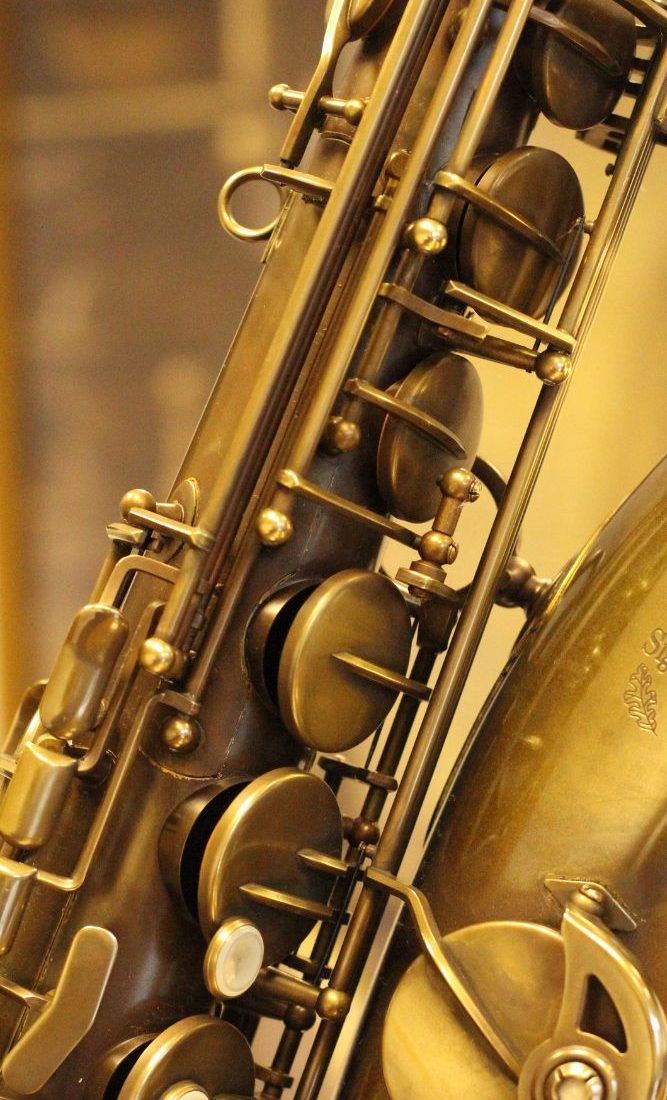
Saxophone Parts:
Key Components
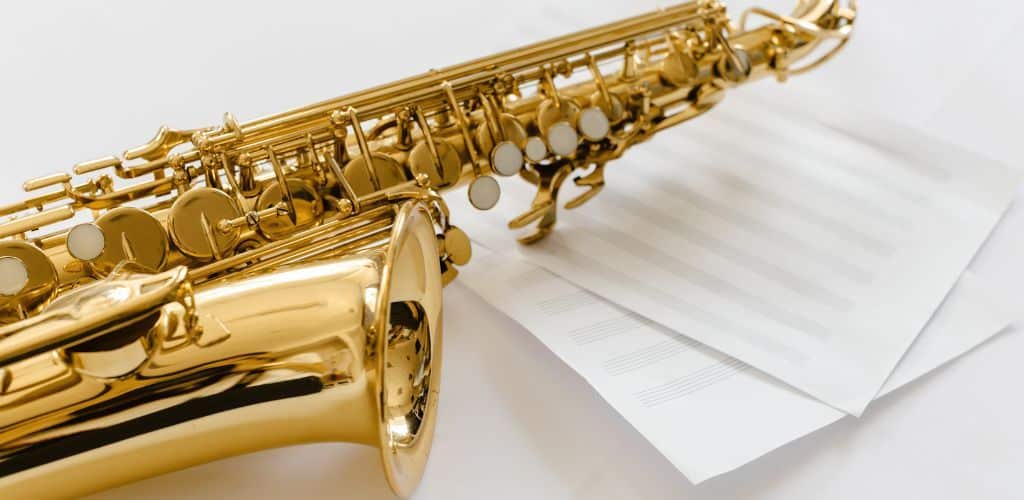
Understanding the saxophone’s parts has improved my overall playing experience. I need to know each section and its function, ensuring I can perform maintenance and troubleshoot issues as they arise.
The mouthpiece, neck, and body are the three primary sections of most saxophones.
The mouthpiece is where I put my embouchure into practice, and it’s crucial for tone production.
The neck, also known as the crook, is where I make subtle adjustments to my intonation.
The body contains most of the mechanics, including keys and tone holes, which are fundamental in producing the range of notes on a saxophone.
I regularly check the pads that cover the tone holes for wear and tear, as they are crucial for a good seal and accurate note production.
The keys must be responsive, and keeping them clean and well-oiled is wise.
Being familiar with the saxophone’s anatomy not only assists me in playing more effectively but also empowers me to care for my instrument correctly.
Whether I’m performing quick repairs or in-depth maintenance, my knowledge helps to keep my sax in top condition, ensuring the best possible sound.
Taking the time to understand these components pays off in the practice room and on the stage. It allows me to express myself musically without being hindered by technical difficulties.
To fellow saxophonists, make this understanding a part of your musical journey.
Wait! Before you go…
Seek out this article that covers saxophones for beginners to find valuable insights and guidance for starting on the instrument.
FAQ's
A saxophone typically consists of several main parts, including the mouthpiece, ligature, reed, neck, body, keys, and bell. The mouthpiece is where the musician blows air into the instrument while the ligature holds the reed in place. The neck connects the mouthpiece to the body, which contains the keys and tone holes. Lastly, the bell is the flared end of the saxophone that helps project the sound.
The mouthpiece is the part of a saxophone where the musician blows air into the instrument to produce sound.
The saxophone consists of five fundamental parts: the neck, the body, the U-shaped bow, octave key, and the round, flared bell. Along the length of the instrument, there are 25 tone holes


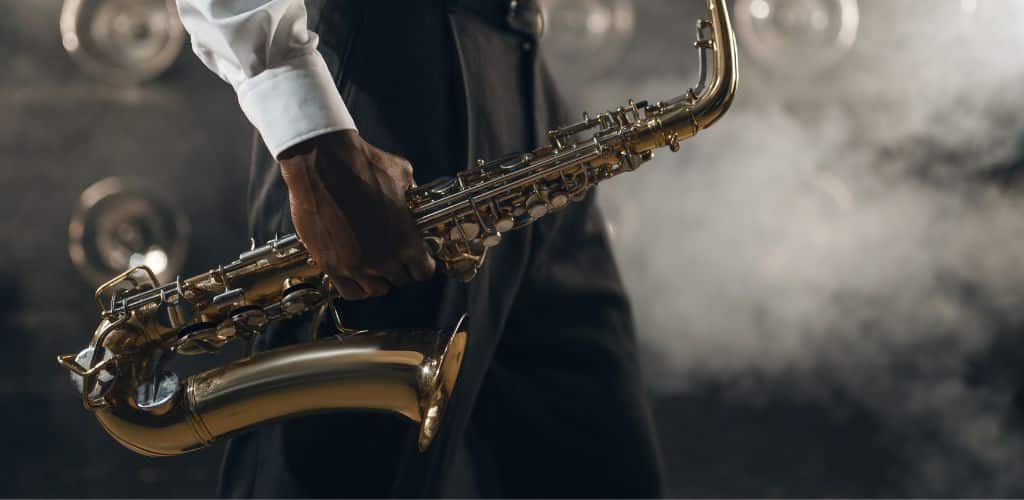








Yo, this piece hits different. Being in college and playing the alto sax in a jazz band, it’s super informative to see all the components laid out. The section on mouthpieces and reeds? Gold. That stuff is crucial and not talked about enough. Big props to Hannah for the clear breakdown. Anyone diving into the world of saxophone has to read this. Also, huge shoutout to those playing the baritone sax, y’all are the backbone of any band!
Interesting article, Hannah Haefele. I appreciate the comprehensive overview of saxophones, but I’m curious about the comparison between saxophone and clarinet mouthpieces. As a clarinet teacher, I find that students often struggle transitioning between the two. Could you elaborate on the nuances between their mouthpieces and reeds?
Just started on the tenor sax and wow it’s got this vibe, ya know. Every time I play, feels like I’m in a jazz club in the 60s. Loved the part about the tenor, really puts into words what I feel.
Yeah, the tenor is amazing. Does anyone have tips for beginners?
Totally get you, SaxDaddy72. The tenor sax has that magic, doesn’t it?
hey, so does the reed type really make a diff in how the sax sounds? got a test coming up and my reed feels weird. Also, hi Hannah Haefele, cool article btw.